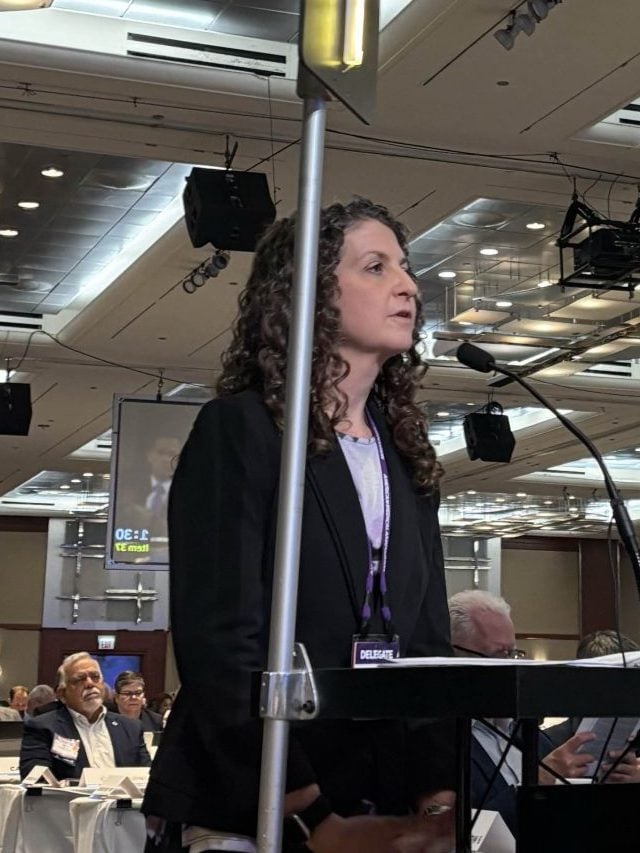Congress Considers President’s Budget, NIH Funding
In May, the federal budget process for fiscal year 2026 (FY 2026) kicked off in earnest as the White House Office of Management and Budget released the President’s Budget Request (PBR) for the coming year.
The PBR calls for an overall 22% cut in non-defense discretionary spending and drastic cuts to the Department of Health and Human Services (HHS), which includes the National Institutes of Health (NIH). The HHS Budget in Brief reveals a nearly 40% proposed cut to the NIH budget compared with FY 2024 funding levels and outlines a significant reorganization of the NIH’s 27 Institutes and Centers (ICs).
While the president’s budget illustrates the administration’s priorities, it does not carry the force of law and attention now turns to Congress and the annual appropriations process that sets discretionary funding for the next fiscal year.
The consolidation would leave the National Cancer Institute, the National Institute of Allergy and Infectious Diseases, and the National Institute on Aging in place; however, four ICs would be eliminated entirely: the National Institute for Environmental Health Sciences would move to a new Agency for a Healthy America (AHA), and the remaining ICs would be consolidated into eight new Institutes.
While the proposed cuts would severely impact paylines across the NIH, there was less of an impact to the Special Diabetes Program (SDP), which funds type 1 diabetes research and type 2 diabetes treatment and education programs among American Indians and Alaskan Natives. Funding proposed for SDP in FY 2026 is $159 million, which would be a decrease of $1 million. The Society has urged Congress to reauthorize SDP at $170 million per-program per-year for at least two years.
While the president’s budget illustrates the administration’s priorities, it does not carry the force of law and attention now turns to Congress and the annual appropriations process that sets discretionary funding for the next fiscal year. Bill text has not yet been drafted as this article was written; however, the budget process is heating up and members of Congress are in active discussions about funding priorities for the coming year. Last week, the NIH released documents demonstrating the impact of a 40% cut to overall funding. These Congressional Justifications (CJs) show, for example, how many grants the administration intends to fund, with significant reductions in the number of awards overall. The CJs assume a flat 15% facilities and administrative (F&A) cost cap, meaning that under current F&A rates the actual number of awards could be much lower.
Following the release of these budget documents, Jayanta Bhattacharya, MD, PhD, director of the NIH, testified at a Senate Appropriation’s Labor, Health and Human Services, Education, and Related Agencies (L-HHS) Subcommittee hearing to discuss the administration’s FY 2026 budget proposal for the NIH. The Director fielded questions from senators about a wide breadth of topics addressing the impact of cuts including the cancellation of grants, how the administration proposes to restructure NIH institutes, the NIH’s overall direction for research, and F&A costs.
The Endocrine Society is alarmed should the restructuring and funding cuts to the NIH take place, the nation’s investment in medical research will be eroded and take years to recover. We understand that these cuts will directly affect our members through reduced pay lines and the reduction or elimination of support for grant programs that scientists depend on and we are advocating to protect the NIH and biomedical research funding.
Several senators expressed concern about the ability of the NIH to advance research and find treatments and cures for diseases like diabetes, cancer, and Alzheimer’s given a proposed budget cut of 40%. Bhattacharya consistently noted that the budget is a collaborative effort between the administration and Congress but did not share many specific details about how the NIH will more effectively or efficiently advance medical research with a reduced budget.
The Endocrine Society is alarmed should the restructuring and funding cuts to the NIH take place, the nation’s investment in medical research will be eroded and take years to recover. We understand that these cuts will directly affect our members through reduced paylines and the reduction or elimination of support for grant programs that scientists depend on and we are advocating to protect the NIH and biomedical research funding. As part of this effort, we submitted testimony to the Senate Appropriations Committee; we also organized a broad group of over 100 organizations who support medical research to urge Congress to protect funding for the NIH and to halt the proposed reorganization of the NIH until some rationale is provided for the massive changes. We urge members to take action on our advocacy campaign at www.endocrine.org/advocacy/take-action so that Congress can hear directly from you about the importance of your work and impact on public health.
AMA Passes Resolution Calling for Expanded Access to Anti-obesity Medications
Endocrine Society champions resolution passed by House of Delegates
On June 10, the American Medical Association (AMA) House of Delegates today passed the Endocrine Society’s resolution to improve access to anti-obesity medications.
In the resolution, the AMA committed to advocating for reducing the burden of prior authorization, when healthcare providers must seek insurance plan approval before prescribing anti-obesity medications. Currently, some insurers require approval before every dose change. Doses often need to be adjusted as patients become acclimated to taking GLP-1s, a new class of anti-obesity medication.

Research has shown these medications can help adults lose an average of 15%-20% of their weight. Despite their effectiveness, fewer than 20% of large employers cover the costs of GLP-1s to treat obesity, according to the Kaiser Family Foundation. Medicare is prohibited by law from covering these medications.
Expanded access would benefit many of the more than two in five adults nationwide who are living with obesity, according to the Society’s Obesity Playbook. Obesity is caused by a complex mix of environmental and development factors, and it puts individuals at risk for other conditions such as heart disease and diabetes. Improved access to anti-obesity medications could help reduce obesity-related medical costs, which total $173 billion a year in the United States.
“Many healthcare providers are delaying prescribing anti-obesity medications to avoid burdening their patients with high pharmacy bills. Removing hurdles to accessing this treatment will help more patients receive the care they need to effectively treat this chronic disease.” – Amanda Bell, MD, Endocrine Society AMA House of Delegates representative
“Many healthcare providers are delaying prescribing anti-obesity medications to avoid burdening their patients with high pharmacy bills,” says Amanda Bell, MD, one of the Society’s House of Delegates representatives. “Removing hurdles to accessing this treatment will help more patients receive the care they need to effectively treat this chronic disease.”

In addition, the resolution supports the elimination of insurance requirements that force patients to obtain prescriptions only from contracted disease management companies. These measures would broaden access to anti-obesity medications.
The Endocrine Society, the American Association of Clinical Endocrinology, and the American Society for Reproductive Medicine introduced the resolution. Co-sponsors of the resolution include the American Society for Metabolic and Bariatric Surgery, the Obesity Medicine Association, and the American College of Physicians.
The adopted resolution builds upon the existing AMA policy of advocating access to bariatric surgery and other obesity treatments to improve patient care and reduce health care costs.
Learn how to be an Effective Endocrine Advocate!
Visit out our online advocacy toolkit at: endocrine.org/advocacy/advocacy-toolkit to learn more about how to communicate with your lawmakers by email, phone, and in person. Your senators and representative answer to you, the constituent. Use your voice to share what’s important to you.

